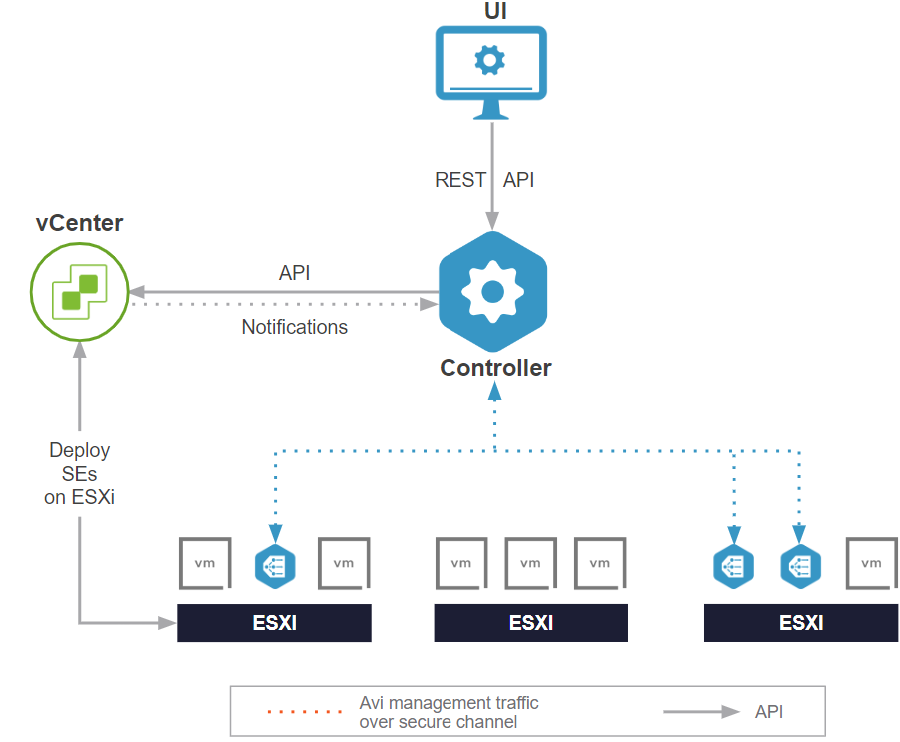Avi Load Balancer is a software-based solution that provides real-time analytics and elastic application delivery services.It optimizes core web functions, including SSL termination and load balancing.
Avi Load Balancer runs on virtual machines (VMs) managed by VMware vCenter. When deployed into a vCenter-managed VMware cloud, it performs as a fully distributed, virtualized system consisting of a Controller and SEs each running as a VM.

The Avi Load Balancer platform is built on software-defined architectural principles that separate the data plane and control plane. The product components include:
- Avi Load Balancer Controller (Control Pane):
-
The Avi Load Balancer Controller stores and manages all policies related to services and management. Through vCenter, the Avi Load Balancer Controller discovers VMs, data centers, networks, and hosts. Based on this auto-discovered information, virtual services can be quickly added using the web interface. To deploy a virtual service, the Avi Load Balancer Controller automatically selects an ESXi server, spins up an SE (described below), and connects it to the correct networks (port groups).
Note:Network objects in Avi Load Balancer now sync with the name of the associated port group in vCenter.
Controllers need access to the desired ESXi hosts (over port 443) to allow the Controller-to-vCenter communication.
The Avi Load Balancer Controller can be deployed as a single VM or as a high availability cluster of three Avi Load Balancer Controller instances, each running on a separate VM. A single Avi Load Balancer Controller cluster supports multiple concurrent vCenter clouds.
- Avi Load Balancer SE (Data Plane):
-
Each Avi Load Balancer SE runs on its virtual machine. It provides the application delivery services to end-user traffic, and also collect real-time end-to-end metrics for traffic between end-users and applications.